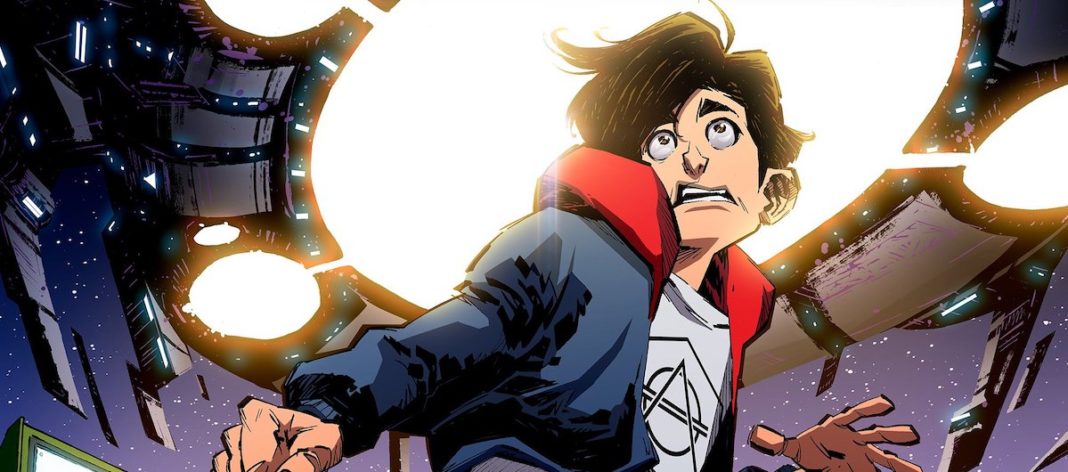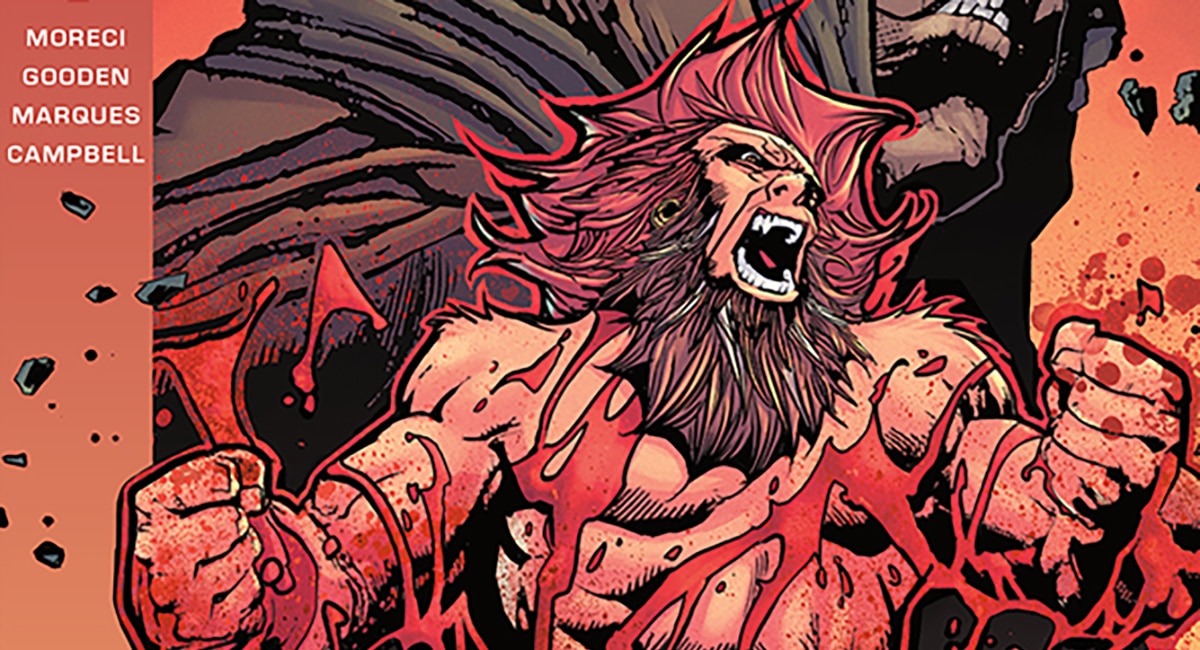Despite the many woes associated with the comic book industry, several small publishers have popped up over the past few years with great indie comics, innovation, and a lot of fresh ideas to take those problems on. The New York Time’s George Gene Gustines brought together the minds behind many of those newer publishers at New York Comic Con. As an attendant of the panel, titled “Innovations in the Indie Comics,” I felt privileged to be privy to one of the most intelligent conversations about comics I’ve ever experienced.
Tom Bilyeu is an ultra-successful entrepreneur who founded Impact Theory to “leverage the self-sustaining power of commerce to radically influence global culture. In the company’s research, he learned that changing people’s mindsets always came back to narrative. His ultimate goal is to create the next Disney, and comics is an important step on that journey. Because of his outside perspective as a CEO of a food and beverage company, Bilyeu knows how absurd the comic book industry is and wants to do something about it.
TKO Studios launched December 2018, and does things a little differently, said its co-founder Tze Chun. The publishers central tenants are binge releasing books as issues, trades, and digital comics. Everything is available at launch and every first issue is free digitally. Everyone at TKO is very excited about the company’s second year.
TKO’s Editor-in-Chief Sebastian Girner discussed working at Marvel and Image Comics, amassing 10 years of experience across two very different publishing models. He brought the experience from both worlds to TKO, which stands as a third option for retailers and readers.
Damian Wassel described co-founding Vault Comics with his brother Adrian in 2016. They wanted more elevated and excellent genre storytelling Vertigo first made popular. Vault has sold several hundred thousand comics since its formation. Damian and Adrian are looking for new ways for consumers to access content, mentioning a proprietary pre-order system they developed. Damian believes the problem comics most needs to solve is increasing the ease of access.
David Hedgecock, an Associate Publisher for IDW, described the company as a 20-year startup. Even though it’s a premiere publisher with Diamond, IDW recognizes there are problems with the system and looks for more ways to reach fans.
The final guest introduced was Michael Moreci, as a writer who has written for a number of small publishers, including several series for Vault Comics and the recently-released Hexagon from Impact Theory.
George Gene Gustines asked the panel the biggest challenges each publisher faces.
Tom Bilyeu said it all boils down to the size of the audience. The flaw in the distribution system inhibits the entire marketplace. Plus, marketing to adults hasn’t worked, because it leaves behind the younger generations. But the massive success of manga in Japan shows that comics can be far more popular in the North America market than it has been.
Chun explained how TKO takes on that distribution problem by delivering its product directly to consumers and retailers bypassing Diamond entirely. The publisher’s operation can handle fulfillment, shipping, and warehousing relatively easily. They can ensure retailers get the best possible experience and customer service in ways an entity as large as Diamond can’t. TKO focuses on publishing new takes on established genres. The team started out simply wanting to create a comic book company but while developing a business model they kept coming up with more ways to do things differently. When choosing how to move forward, they ask if their decisions are good for creators, fans, and comics as a whole.
Michael Moreci mentioned how, once he began writing novels, he began to understand how segmented the different kinds of comics are. A bookstore won’t have many of the biggest comic book store titles and vice versa. A local comic book shop may not even sell Scholastic graphic novels, and Batman is far from the key to a bookstore’s success with graphic novels.
Damian Wassel described comics’ marketing problem as conceptual rather than constructional. Anyone you stop on the street knows where to buy a book, but not many know where to buy a comic. Publishers need to convince everyone that comics are just books with different structural elements. Vault does that by telling stories that break out of traditional comic book genres and remove the qualitative gap between novels and comics.
Gustines asked if less expensive comic might lead to more readers. David Hedgecock replied that, in an age of streaming services, it’s hard to compete on a price point. He suggested that rather than pushing the price down, print products should be something with unique tangible qualities readers can enjoy, cherish, and go back to. The industry needs to think about what print can do to make unique and interesting experiences because it’s hard to directly compete with the $13 billion Netflix spends on its production each year.
Bilyeu said that it’s incredibly important to acknowledge the power of imprinting young minds. Based on Impact Theory’s research, the qualities of a person are more or less set by the time they’re 7 years old. Brains are primed to soak up the culture they grow up in.
Impact Theory is interested in the lost generations who didn’t grow up reading comics. Bilyeu was one of several panelists who brought up how Raina Telgemeier’s GUTS was the #1 book (not just graphic novel) of the week on the New York’s Times Bestseller List. The problem is that no one is catering to the demographic that ages out of Scholastic’s graphic novels. That’s the target audience of Impact Theory, which hopes to lead a 20-year push to turn the tide of the comic industry.
Gustines asked the panelists where they want to be in five years. Bilyeu reiterated that Impact Theory wants to pick up where Scholastic leaves off with readers around 14 years of age and said the publisher is also trying to bring the anime art style to the United States comics market.
Damian Wassel also believes that kids are an important demographic, and says that Vault is interested in a middle-grade line.
Tze Chun said it’s hard to know where TKO will be in 5 years because the publisher values its ability to make decisions on the spot to adapt to changes in the market.
David Hedgecock said he didn’t want to speak for all of IDW, but he’d like to see the publisher transition away from licensed properties to put more focus on creator-owned projects.
Finally, the panelists were asked about escaping the stigma associated with comics. Bilyeu said that he’d like to imitate video games, which can reach people when they’re young and stay with them. Wassel pointed to storytelling that is open, sincere, and takes risks. He also stressed the importance of endings, attributing the success of YA graphic novels to containing complete stories, rather than the never-ending soap operas of superhero comics.
Sebastian Girner said that great comics can reignite passion, but the success of any kind of reading requires kids adopting the hobby at an early age. In addition to removing the separation between books and comics, the world needs to foster reading across the board. Doing so is the key to interesting kids (and the adults they become) in reading over other forms of escapism.
Featured image art is by Jorge Corona, from Hexagon #1.









Comments are closed.